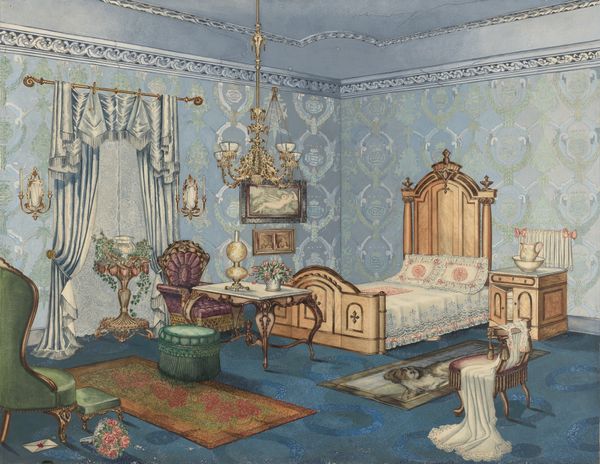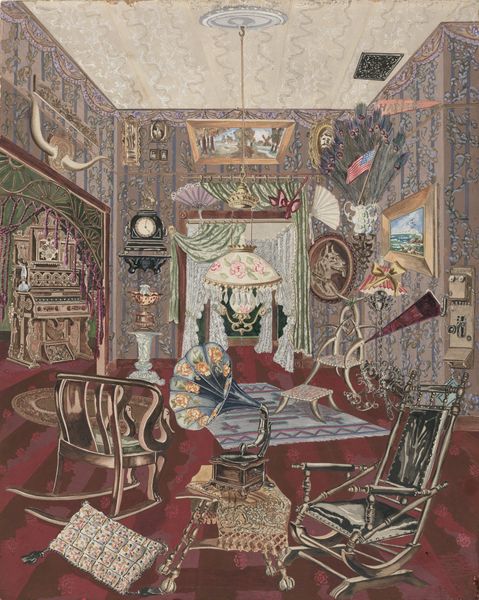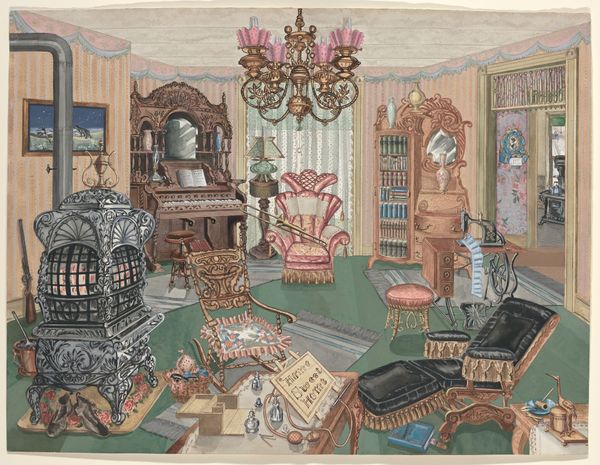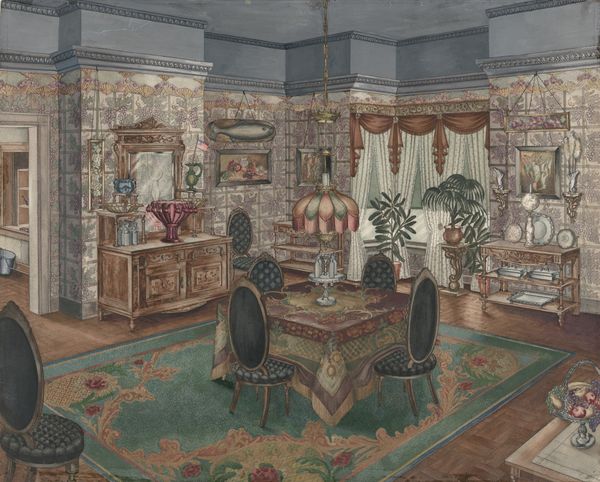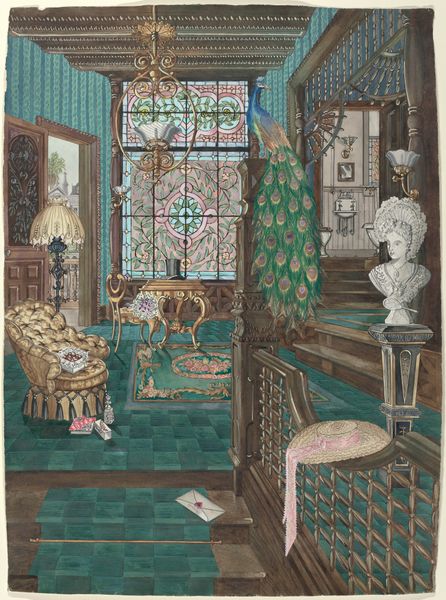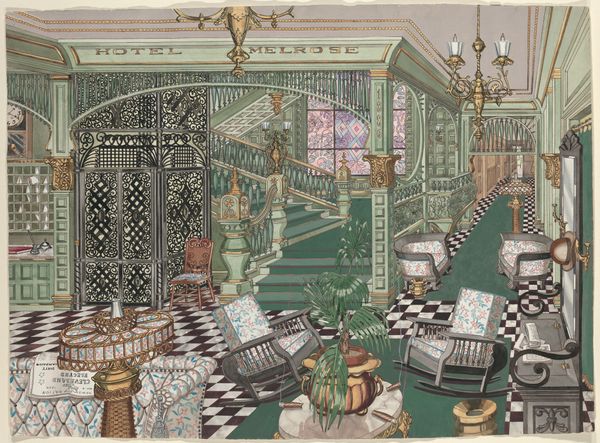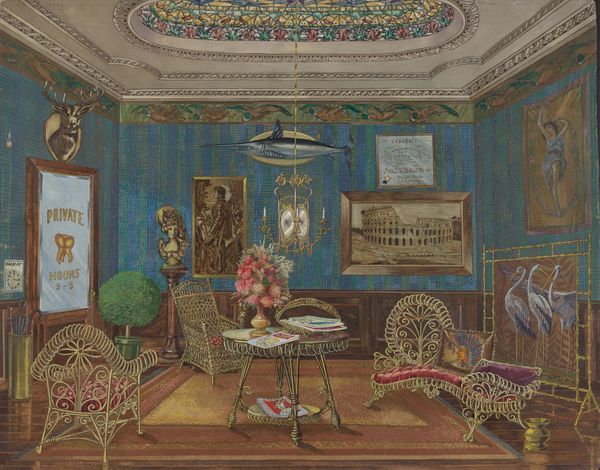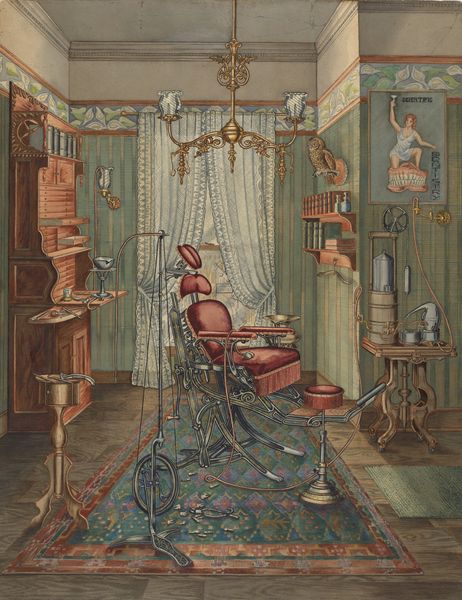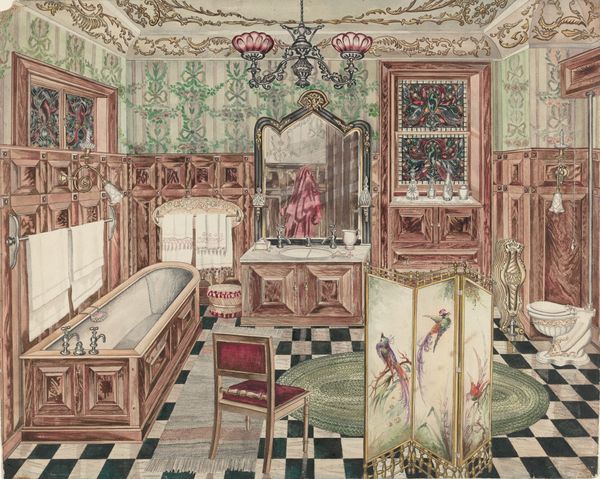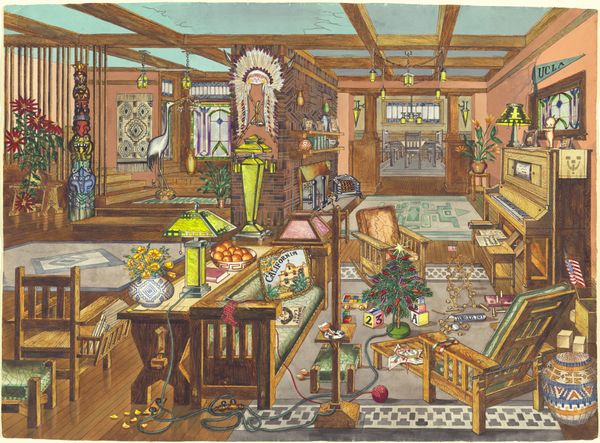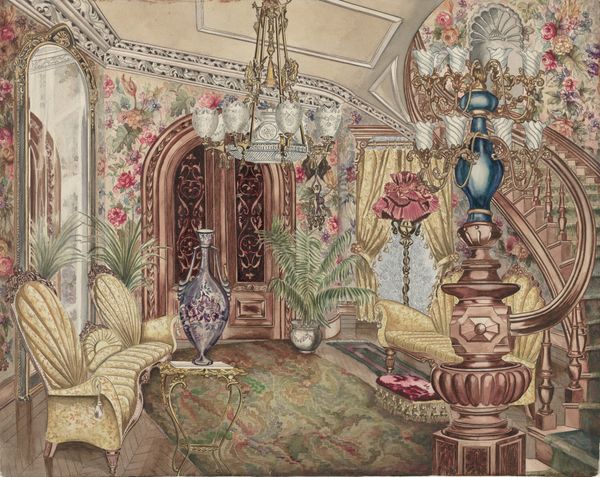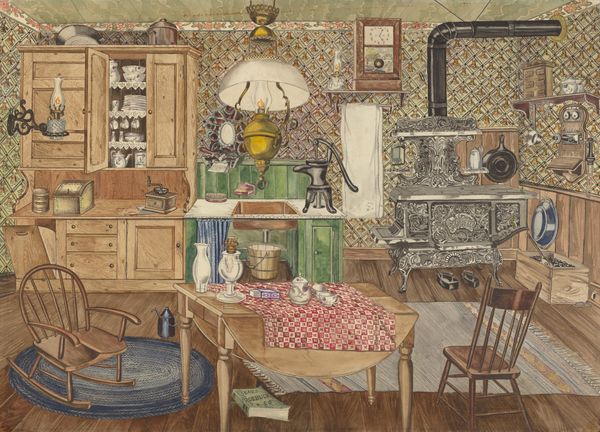
drawing, painting, watercolor
#
portrait
#
drawing
#
water colours
#
painting
#
watercolor
#
intimism
#
genre-painting
#
watercolor
Dimensions: overall: 36.2 x 56 cm (14 1/4 x 22 1/16 in.)
Copyright: National Gallery of Art: CC0 1.0
Curator: I am struck, looking at Perkins Harnly's "Woman's Bedroom," which he created sometime between 1935 and 1942, by its strange feeling of calm—almost like a stage set waiting for a play to begin. What’s your take? Editor: Well, it’s definitely a confection. All those pastel shades and frills, layered patterns and crowded decor. It evokes a powerful sense of claustrophobia and repressed femininity to my eye. This is a woman’s space as constructed by a certain time and a certain social gaze. Curator: Interesting! It’s rendered so meticulously, almost clinically, in watercolor that the abundance you mention seems deliberate—like an inventory of personal effects rather than an inhabited room. Harnly had quite a unique, eccentric voice, especially given that he focused on interior scenes and portraits within the genre of American Scene painting. Editor: The American Scene... which often skirted propaganda under the guise of authenticity. Does this "Woman's Bedroom" reflect the actual tastes of its inhabitant or societal expectations projected onto her? The almost suffocating abundance and detail become tools for constructing and controlling female identity, a frequent preoccupation during the Depression Era. Curator: A heavy interpretation, but I can see that point. Harnly was interested in preservation, meticulously documenting homes and interiors that represented a disappearing middle class. But perhaps there is a subversion inherent to his detailed documentation. It's not always nostalgic idealization. I mean, that little ukulele hung above the bed! And all of those curious frames and adornments that catch the eye. Editor: Absolutely, I notice all those elements, and the painting becomes interesting because of their accumulation. Harnly perhaps wasn't in full control, in a conscious manner, of every cultural symbol, though his position—male, middle class—is critical to any interpretation. It opens into questions of decor and its symbolic place in the home and history of women’s role within it. Curator: Well, I will definitely be reflecting upon it through this critical lens. Editor: It is art’s unique capacity to have these kinds of open dialogs, right?
Comments
No comments
Be the first to comment and join the conversation on the ultimate creative platform.
